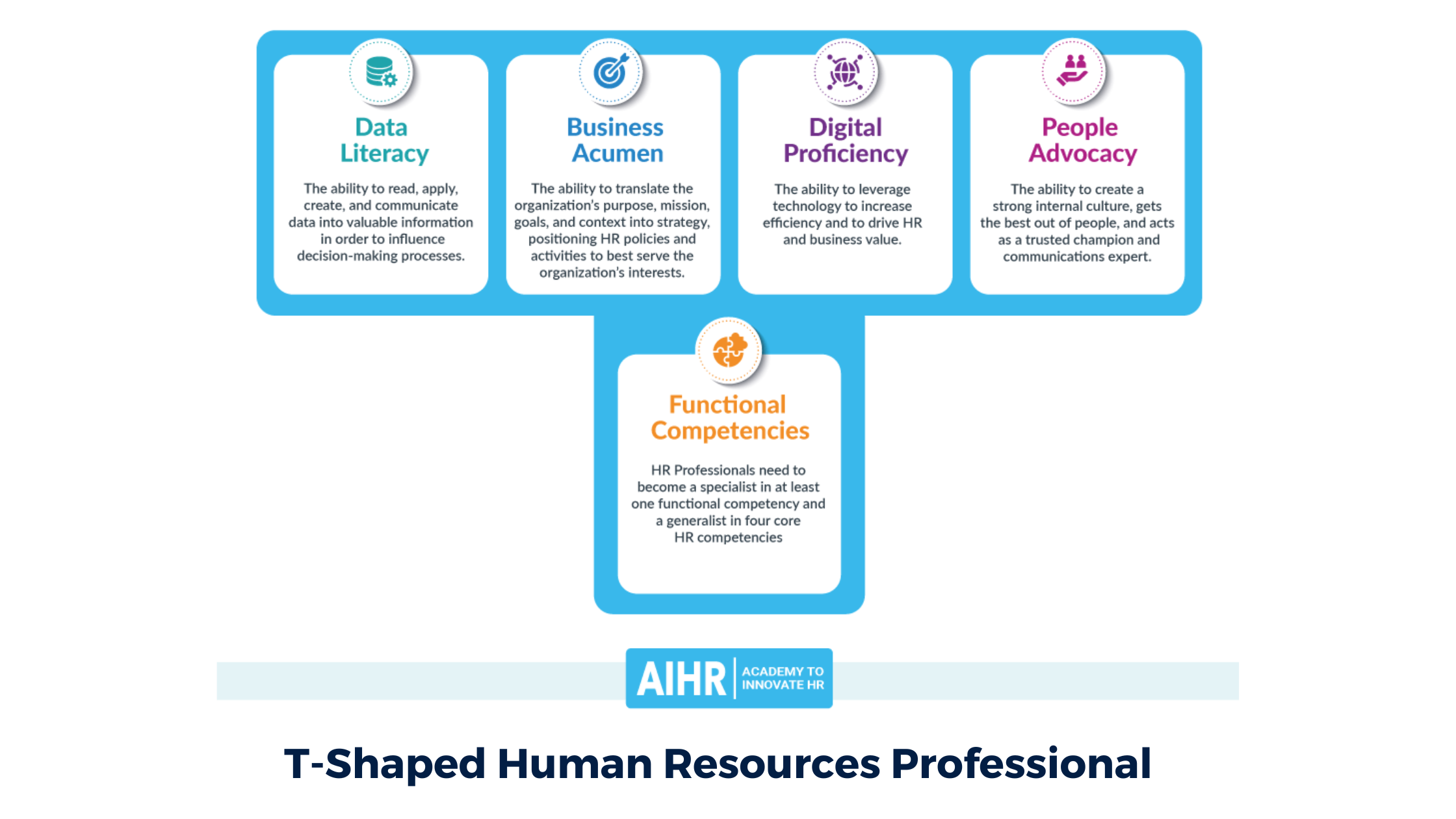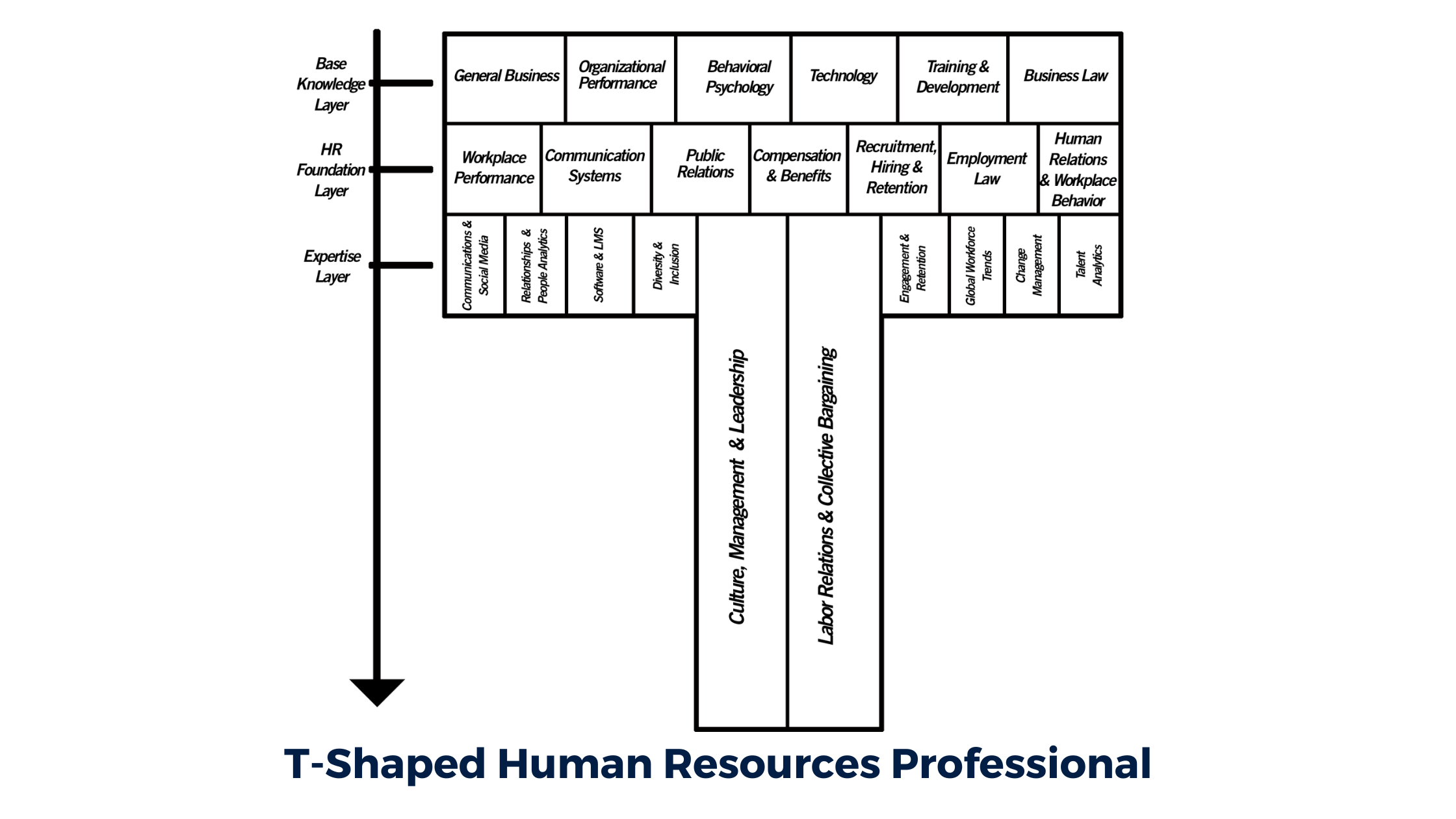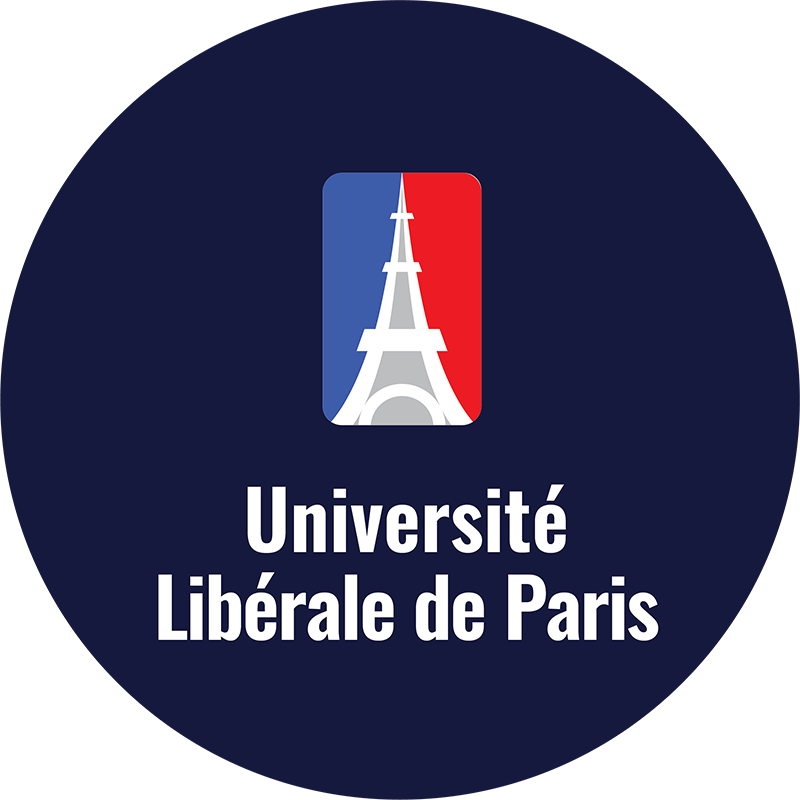Human Resource professionals now play an important strategic role due to several factors, including technological advancements and labor market globalization. Therefore, human resource managers in the modern workplace need a broad set of abilities. HR professionals nowadays need to be able to adapt to shifting priorities and work as strategic partners with senior management.
Table of Contents
ToggleDefining T-Shaped Human Resource Professionals
There is an essential demand for human resource professionals who have expert knowledge in their respective HR disciplines and can collaborate cross-disciplinary with various clients to manage a wider variety of projects. This demand has led to numerous job openings in the HR industry. The T-shaped HR professional is the name given to the next generation of human resources (HR) personnel.

T-Shaped HR Professionals are the most well-rounded HR specialists possible.
T-Shaped HR Professionals, also known as TSPs, are the most well-rounded HR specialists possible. It is dependent on a new sort of professional who can break out of the traditional HR positions to communicate freely with internal stakeholders (the horizontal part of the “T”) while still being fiercely devoted to their expert performance (the vertical portion of the “T”).
They have a comprehensive grasp of the company, make choices based on the facts, and are incredibly effective problem solvers because they combine an HR generalist’s responsibilities with a specialist’s benefits. Consequently, human resource professionals with a competency profile in the shape of a T can easily manage difficulties that cut across functional lines and are a good choice for leadership roles.
4 Stages In Navigating T-Shaped Human Resource Professionals

4 Stages of T-Shaped Human Resources Professional Navigation.
Over time, the various applications of the T-shaped model have been named general business skills and knowledge in the top horizontal bar, which enable collaborative working across disciplines. This is followed by the vertical expertise bars and the relevant skills foundation flat layer, which indicate an organization’s prioritized skills for certain positions.
The T-shaped model presented here can be used as a guide by HR professionals responsible for ensuring that their organization complies with employment laws, administering and monitoring communication practices, and increasing employee engagement to discourage the formation of labor unions.
Grounded Layer Of Human Resource Professionals

An infographic of T-Shaped Human Resources Professional
This horizontal bar represents the extensive business knowledge that an HR professional must possess to collaborate effectively with CEOs. This field of study includes general business knowledge (such as finance, marketing, production, etc.), organizational performance, technology, business law, and general communication systems and practices, such as negotiation. The following levels of expertise are built upon the foundation of the information obtained in this layer.
To read more about the benefits of the T-Shaped model’s impacting the workforce, click here.
HR Foundation of Human Resource Professionals
This horizontal bar beneath the foundation layer begins drilling down to the broad abilities necessary to function as an HR professional in each given firm. The requirements for this position include skills such as workplace performance and organizational communication systems.

Deepen into Human Resources Professional Expertise.
Organizational communication systems may consist of technology-based systems such as public relations to reach employees, social media, families, and the press, compensation and benefits, employee recruitment, hiring, and retention, HR-specific analytics, employment law, and human relations and workplace behavior.
HR Expertise of Human Resource Professionals
These vertical bars include the specialized knowledge that an HR professional requires to deliver the possible value to a particular firm. Various training and development methods may improve these abilities, including hands-on experience, classroom instruction, and self-directed study and practice.

There are many fields that a Human Resource Professional need to fulfill.
The potential areas of expertise include:
- Mobile communication and social media.
- Relationship building.
- Analyzing people for decision-making.
- Collective labor relations and bargaining to keep the company union-free.
- LMS (Learning Management System) and software applications for onboarding and training, including Projections’ web, custom video, and eLearning solutions for ongoing and onboarding employee communication.
T-Shaped Human Resource Professionals
In most cases, those with a T-shaped professional profile make excellent leaders. They are equipped with a wide range of soft skills, such as working well with others, thinking critically, and solving problems.
T-shaped HR experts also provide a distinct additional value to the boardroom, which assists their organizations in improving the decisions they make. They must be able to grasp their workforce and mix this information with their knowledge of their company and international background adoption.

Becoming an all-rounder human resources specialist through the T-Shaped model is more proficient.
Conclusion
In conclusion, a successful HR professional requires knowledge of more than remuneration and benefits, talent acquisition, and learning and development. It would help if you also comprehended the business’s processes, such as how its products are manufactured, how its services are delivered, how it generates a profit, etc. As a result, it is now quite typical to discover HR experts with prior experience in Marketing, Sales, or Product Development.
Université Libérale de Paris is proud to be the first liberal arts university for post-graduate teaching and driving a T-Shaped learning approach toward students. For more information about the courses, read here.




